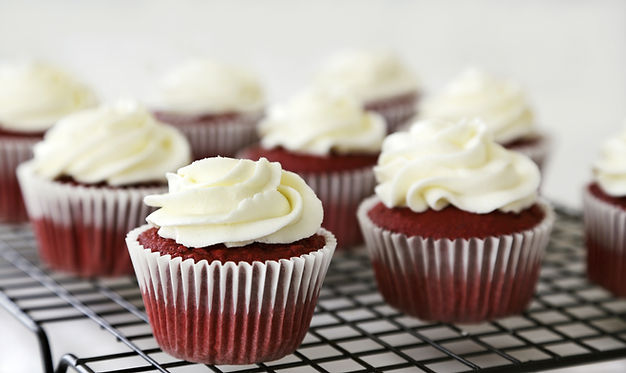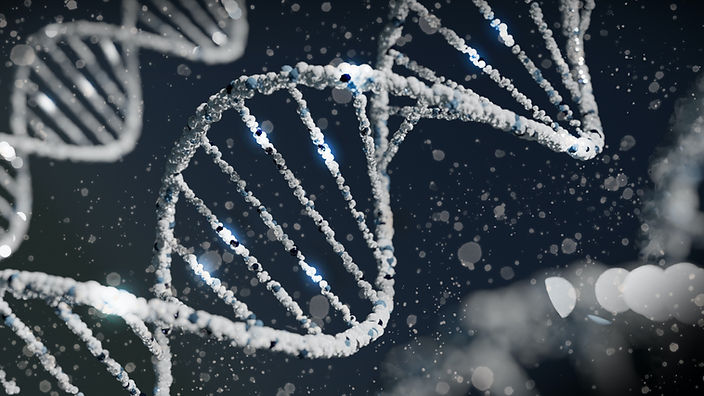
Biology & Chemistry Review

Unit 2 Synopsis
In this unit, you will review general concepts that should have been learned in biology and chemistry.
From chemistry, we will review types of bonding, pH, macromolecules, and chemical reactions.
From biology, we will review energy, including cellular respiration and energy-carrying molecules, organelles, cell growth and development, and cellular transport
Affixes and Roots
macro-
large
-ase
Enzyme
bio-
life
hydro-
water
sacchar-
sugar
mono
one
-ology
study of
de-
without
co-
with
-ose
sugar
Atomic Composition
Subatomic particles:
Neutrons
Particle that has no charge
Isotope: variants of elements with different masses, i.e. a change in number of neutrons
Radioisotopes: radioactive isotopes that are instable due to a great difference in number of protons and neutrons
For example, carbon exists in 3 forms carbon-12, C-13, C-14.
C-12 and -13 are stable, whereas C-14 is radioactive
***READ:
Questions:
Protons
Particle that has a positive charge
# protons = atomic number
change # protons = change element
Electrons
Particle that has a negative charge
Valence electrons are located on the outermost shell and determines the stability of the atom/ion
Electronegativity: the degree to which an element tends to gain electrons and form negative ions in chemical reactions:
Octet rule: Shells are generally full with 8 electrons; therefore will strive to reach stability (for rows of two and higher)
Oxidation: loss of electrons
Reduction: gain of electrons
Atomic mass = #neutrons + # protons

Bonding
Hydrogen Bonds: polar covalent bonds that form in the presence of hydrogen; partial positive charge attracts partial negative charge (especially oxygen or nitrogen).
Weak in comparison to covalent and ionic
Covalent Bonds: atoms form a molecule by sharing valence electrons.
Most common chemical bond in the body.
Nonpolar covalent bonding: atoms share attraction equally; Ex: CH4 (methane), C3H8 (propane)
Polar covalent bonding: one atom is more strongly attracted than the other, large difference in electronegativities. Dissolves in polar compounds. Ex: water
Ionic Bonds: an atom loses or gains valence electron(s). The imbalance of electrons and protons forms an ion.
Two nearest neighboring atoms have a large difference in electronegativity
Cation: loses an electron, positively charged
Anion: gains an election, negatively charged
Ions in the body are generally dissolved into electrolytes (solutions can conduct electricity); essential for critical body functions such as water movement, acid-base balance (pH), nerve impulses.
Common ions: Na+, K+, NH4+ (ammonium), Cl-, OH- (hydroxide)
Example ionic bonds: NaCl, KCl, CaCl2
Heisenberg Uncertainty Principle: It is impossible to determine with perfect accuracy the momentum and the position of an electron simultaneously
Inorganic Chemistry
Inorganic compounds are those that do not contain carbon
The most abundant molecule in the body is water. It acts as a biological solvent.
Acids: substance that can dissociate and produce free hydrogen ions (cation)
Arrhenius: increases the hydrogen ion concentration in an aqueous solution
Lewis: accepts an electron pair
Bronsted-Lowry: proton donor
Bases: substance that can dissociate and produce an acceptor, such as hydroxide (OH-) ions
Arrhenius: compound increases the hydroxide ion concentration in aqueous solution
Lewis: donates an electron pair
Bronsted-Lowry: proton acceptor
pH: (potential of hydrogen), universal scale to determine acidity vs alkalinity from 0 to 14
7.0 is neutral
>7.0 is basic
<7.0 is acidic
Two adjacent pH numbers differ by a factor of 10
a pH of 9 is 10x more basic than 8.0
a pH of 4.0 is 100x more acidic than a pH of 6.0
Buffer: weak acid + weak base
(weak is lacking the ability to donate or accept hydrogen ions)
Buffers keep the same number of hydrogen ions around them, therefore:
1. it can maintain the pH of a solution, will resist change in pH when acids or bases are added because the buffer soaks up the additional hydrogen ions (to a point)
2. tend to make weak acids out of strong ones and weak bases out of strong ones
Neutralization: process of balancing out an acid with a base to reach a pH of 7.0

Organelles
Cell membrane: regulates what enters and exits the cell
Semi-permeable, with a hydrophobic tail (orientated inward of the membrane) and hydrophilic head (orientated outward). This generally inhibits the movement of polar molecules, except water. In addition to the phospholipid predominate structure, there are also proteins that act as channels and carriers, and carbohydrates that provide stabilization,
Cytoplasm: gel-like fluid that provides structure within the cell
Mitochondria: location of cellular respiration to produce ATP
Ribosome: produces proteins
Rough Endoplasmic Reticulum: produces and packages proteins
Smooth Endoplasmic Reticulum: produces lipids
Flagella: whip like structure that propels cell through fluids
Cilia: tiny hair like structures that move fluid around the cell
Centrioles: allow for cellular division in animal cells
Nucleus: contains genetic material that controls cell processes
Lysosomes: catabolic reactions of waste in animal cells
Vacuoles: storage
Genetics Terminology Review
Deoxyribonucleic acid serves as the blueprint or instruction manual for protein production. Human DNA is condensed into 23 pairs (46 total) chromosomes that are inherited. Chromosomes are further divided into sections that code for a single protein, called a gene.
The cental dogma of molecular biology is the process of forming a protein from DNA instructions. There are two steps in the central dogma, transcription and translation. Since DNA cannot leave the nucleus, a messenger (RNA) is required to get the information to the ribosome in the cytoplasm. At the ribosome, messenger RNA is read and transfer RNA bring the correct amino acid to produce the desired protein.
DNA --> transcription --> RNA --> translation --> Protein

Macromolecules

Energy
Chemical Reactions
Exergonic (exothermic): releases more energy than absorbed; catabolic - breaks down larger molecules into smaller units
Endergonic (endothermic): absorb more energy than released; anabolic - build larger molecules from smaller units
Activation energy: the amount of energy required to start a reaction
The energy currency of the cell is adenosine triphosphate (ATP)
ATP is a nucleotide, therefore made of a nitrogenous base (Adenine), a pentose sugar (ribose), and three ("tri-") phosphates.
Easily accessible energy is stored in the bond between the second and third phosphates.

Enzymes
Enzymes are specialized proteins that control the rate of biochemical reactions. Enzymes function by decreasing the amount of activation energy required.
Enzymes are generally denoted with the suffix -ase. One enzyme will generally only catalyze one specific biochemical reaction.
Enzymes are essential for proper bodily functioning. We will discuss specific examples in various organ systems.
Cell Transport
Passive transport: does not require additional energy; move down the concentration gradient, move from areas of high[ ] to low [ ]
*Concentration = [ ]
simple diffusion: spreading out of molecules across a membrane
until equilibrium is reached
Ex: small, non-polar molecules passing through the cell membrane, such as oxygen
facilitated diffusion: uses a transport protein to facilitate the diffusion of
molecules
Ex:
osmosis: movement of water
hypertonic: water [ ] is lower than cell’s cytoplasm, water moves out of cell, therefore, the cell shrinks
hypotonic: water [ ] is higher than cell’s cytoplasm, water moves into a cell, therefore the cell swells
isotonic: water is equal to cell’s cytoplasm, water moves in and out of the cell at the same rate, therefore, the cell stays the same
Active transport: requires additional energy, moves up the concentration gradient, from areas of low [ ] to high [ ]
molecular pumps: uses protein channels to pump molecules across the cell membrane, particularly ions
Ex: Na+, K+, Cl-
Vesicle transport
Endocytosis: uses vesicles to move large particles into the cell
Phagocytosis: cell “eating”
Pinocytosis: cell “drinking”
Exocytosis: uses vesicles to export materials out of the cell
Ex. White blood cell engulfing bacterium
Signal Transduction Pathway
A sequence of events initiated by a signal that leads to a cellular response
Signal --> Message Transduced --> Desired Response
Autocrine signals: "self", affect the same cell that releases them\
The signaling cell is the target
E.g. Prostaglandins that have a bunch of different functions like aiding in contraction and relaxation of muscles, dilation and constriction of blood vessels, and modulating inflammation.
Paracrine: diffuse to nearby cells
E.g. The conduction of an electric signal (neurotransmitter) from a nerve cell to a muscle cell or another nerve cell
Juxtacrine: require direct contact between the signaling cell and the receiving cell
E.g. Some growth factors signal this way that are critical for the development of cardiac and neural function
Many unicellular organisms (e.g. bacteria) signal via direct contact
Hormones: signal travels to distant cells
e.g. Ghrelin regulates hunger (increases hunger, leptin decreases it)
Receptors
Protein where the signal is received on the target cell
Intracellular receptors
Located inside a cell
Ligands for these signals are small and/or nonpolar so they can easily diffuse across the cell membrane to reach these receptors
Membrane receptors
Located on surface of the cell
Ligands for these signals are large and/or polar that cannot diffuse through the cell membrane
Receptors are highly specific and three-dimensional, only certain ligands can bind specific receptors
When a ligand binds to the receptor protein, the bond is noncovalent (therefore not strong) and is reversible
This is so the signal can be regulated more easily
Inhibitors can block the normal ligand to prevent communication
E.g. Caffeine
Caffeine is a large, polar molecule that binds to receptors on nerve cells in the brain. Its structure is similar to adenosine, which binds to receptors after activity or stress 🡪 feelings of drowsiness. Caffeine binds to the same receptor, but does not activate it 🡪 a person remaining alert rather than feeling tired
The most common types of receptors are :
*Ion channel
*Protein kinase receptors: kinases phosphorylate molecules
*G protein linked receptors: binds various ligands such as light-sensitive compounds, odors, pheromones, hormones, neurotransmitters
TRANSDUCTION
The passing along of the signal until the desired response is reached
Transduction can be short or long
Longer if a signal cascade of reactions is induced
The passing along of the message usually happens by changing the shape of different proteins
*Phosphorylation (addition of phosphate groups) by kinases
*Dephosphorylation (removal of phosphate groups) by phosphotases
Sometimes a second messenger is involved to stimulate signal transduction
Second messenger a small molecule that serves as an intermediate between the receptor and the cascade of responses after
Key for regulation
Distribute or amplify the initial signal received at the receptor
E.g. cAMP is a second messenger in our fight-or-flight response
http://learn.genetics.utah.edu/content/cells/cellcom/
Essentially the epinephrine/adrenaline hormone activates a liver enzyme called glycogen phosphorylase that then catalyzes the breakdown of glycogen for quick energy when the body is in fight-or-flight
Responses
A transduction pathway eventually triggers a response
The same signal can cause many different responses, such as:
*Opening of ion channels: by changing the balance of ion concentration inside and outside of the cell
*Alterations in gene expression: genes may be switched on (upregulated) or switched off (downregulated)
*Alterations of enzymatic activity







